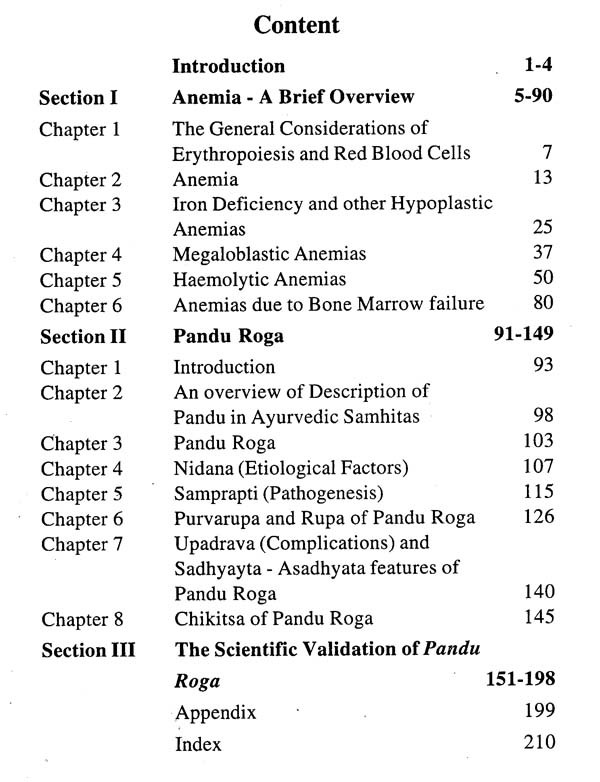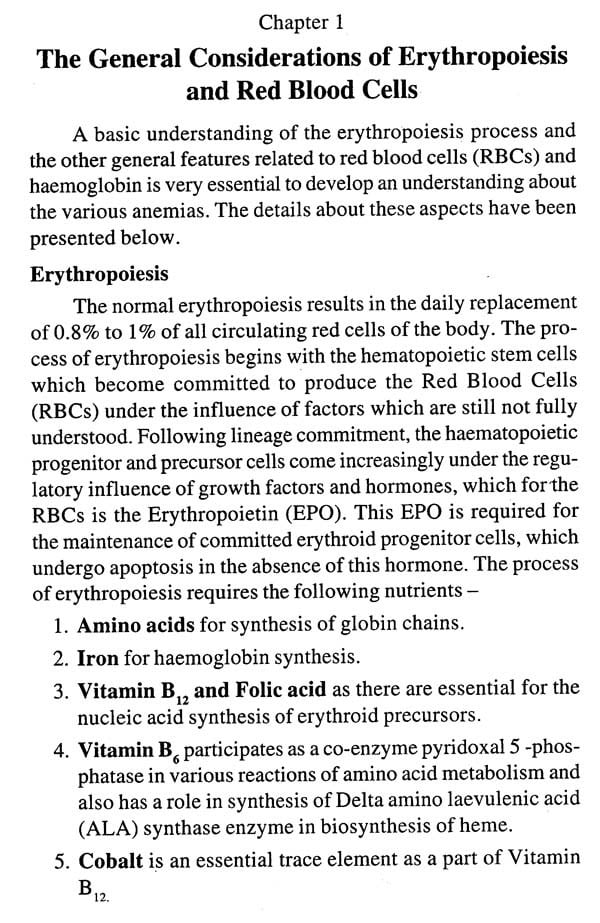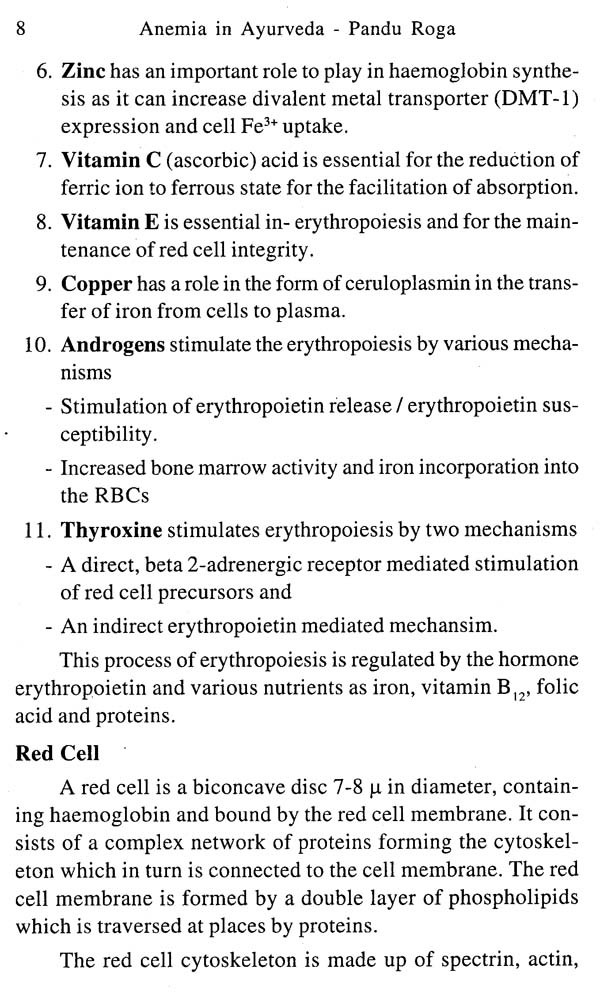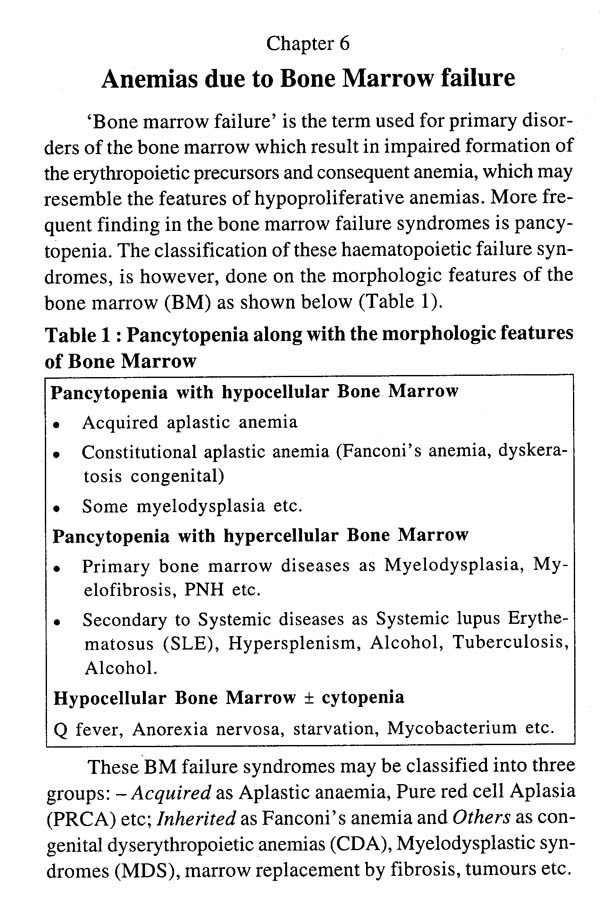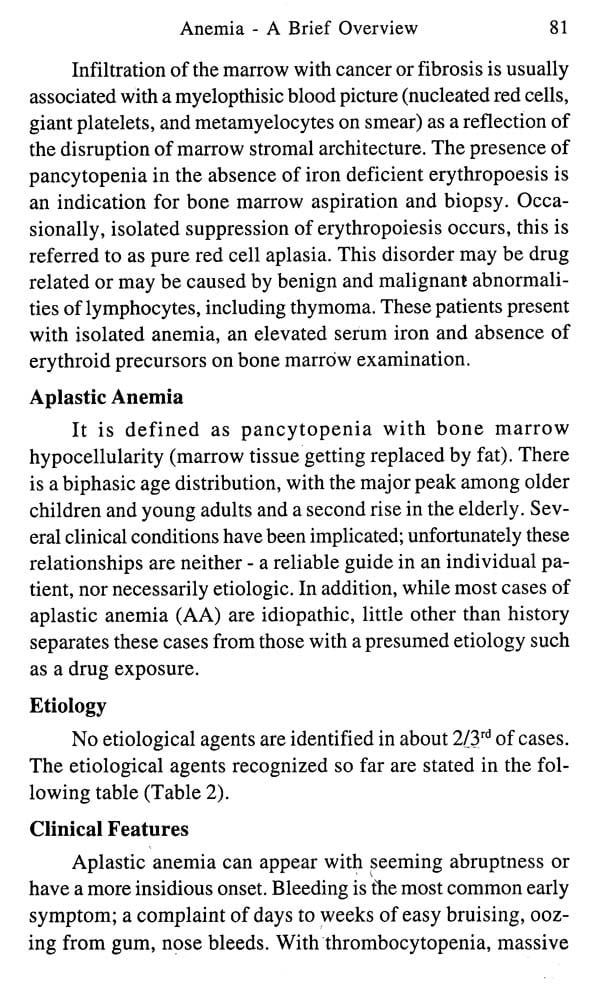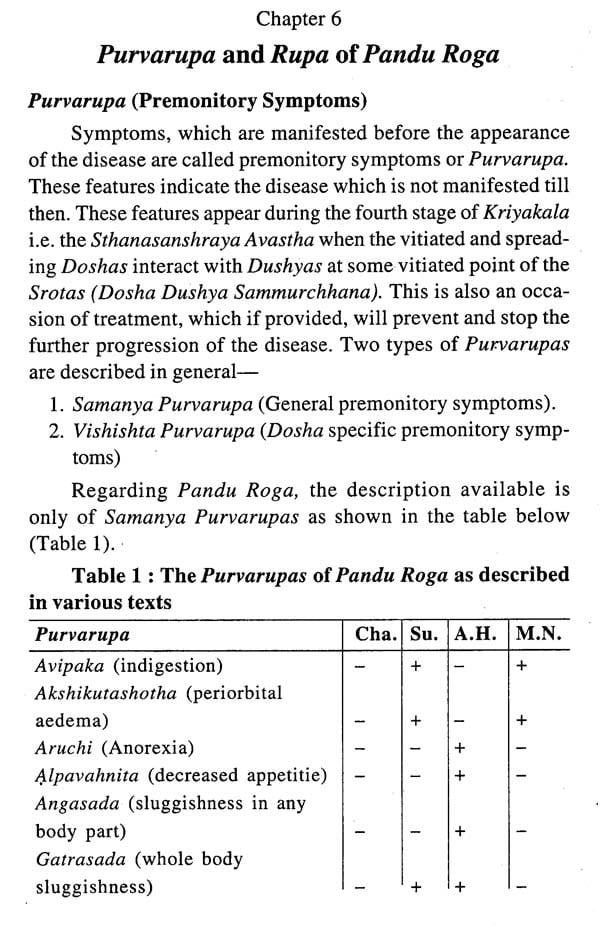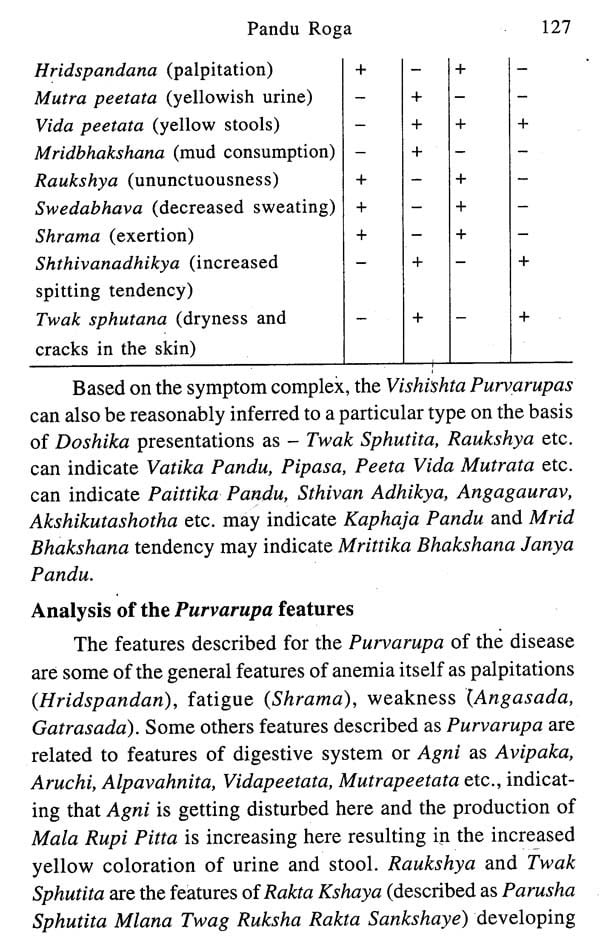
Anemia in Ayurveda- Pandu Roga
Book Specification
| Item Code: | NBZ262 |
| Author: | Shalini Rai |
| Publisher: | Chaukhambha Publications |
| Language: | ENGLISH |
| Edition: | 2015 |
| ISBN: | 9789381608647 |
| Pages: | 220 |
| Cover: | PAPERBACK |
| Other Details | 8.50 X 5.50 inch |
| Weight | 230 gm |
Book Description
This book presents a vivid description about the various anemia and Pandu Roga as described in their specific literatures collectively, and then tries to bring out the hidden scientific attitude and temperament of Ayurveda by describing about the various researches on this topic.
Logical explanations to the various Ayurvedic concepts have been given and the matter has been tried to be put in a simplified manner so that the book may prove useful for even the undergraduate scholars interested in the topic, besides the post graduate scholars and researchers for whom this book is primarily intended.
the author completed her post graduation (M.D.) in the department of Roga Nidana and Vikriti Vigyan from National Institute of Ayurveda, Jaipur and has attained Doctorate (Ph.D.) from Faculty of Ayurveda, I.M.S., B.H.U. under the guidance of renowned teachers of Ayurveda.
The discovery and the documentation of anemia as found in the modern literature dates back to fifteenth century with the name of chlorosis (green sickness, morbus virgeneus, mald'amour etc.) by Johann Lange in 1554. The knowledge about the importance of iron for the synthesis of haemoglobin was gained even later. Exploring in the Ayurvedic literature we find that the description about a similar disease by the name of Pandu roga, Vilohita, Halima, Haribha etc. is found in the time period of Vedas which are the oldest written literatures of the world. The detailed description about such disease (Pandu Roga) is found around about 300-500 BCE in the Charaka Samhita (the ancient text of medicine and way of life) which is also very much ahead of the modern medical science. This text has given very scientific description regarding blood and anemia, though the terminology used in the Ayurvedic texts are different. The description about the importance of iron (Lauha) in the blood (called as Rakta in Ayurveda) formation was recognised in India in the Vedic period itself. This is the reason why Ayurveda describes Rakta by the synonym of Lohita (meaning one that is derived from iron).
With advancing researches, the modern medical science gained further insights about the disease anaemia and various parameters related to it as-
• Role of amino acids for the synthesis of globin chains,
• Importance of vitamin B12 and folic acid as essential nutrients for the nucleic acid synthesis of erythroid precursors,
• Role of vitamin B6 cobalt, zinc and vitamin C (ascorbic acid is essential for the reduction of ferric ion to ferrous state for the facilitation of absorption),
• The necessity of vitamin E in erythropoiesis and for the maintenance of red cell integrity,
• The role of Copper in the transfer of iron from cells to plasma (in the form of ceruloplasmin) etc.
If we search kind of descriptions in Ayurveda, we don't find it in our texts. However still, it is amazing to notice that in spite of no reference being made in the literature, the medicines of this disease (Pandu roga) have almost all of the above described elements in them - Lauha and Mandura (oxide of iron) or substances as Dadima (Punica granatum), Amalaki (Emblica officinalis), Draksha (dried fruit of Vitis vinifera), Swarna makshika (chalcopyrite) etc. which are rich source of iron; copper (Dadima, Swarna makshika); ascorbic acid (Dadima, Amalaki); calcium, magnesium, zinc, potassium, phosphorous, niacin etc [present in Shunthi (dried Zinziber officinale), vitamin E in the form of various Ghritas etc.
The development of anemia due to worm infestation is also found in Ayurveda by the name of Mrittikabhakshanajanya Pandu; relating the coming in contact with mud or ingestion of mud to development of abdominal worms, finally culminating in Pandu roga. Not only this, the treatment of this condition also envisages the use of proven anthelmentic drugs as Vidanga (Embelia ribes).
It is wonderful to also see the holistic approach of medicine preparation in Ayurveda in which due consideration is made to derive such combinations of drugs so that the side effect of one is negated by other and minimal or no side effects are produced in the patient. The side effects of the iron therapy as seen in the modern medical science of nausea, gastric upset, constipation etc. are one of the major reasons for their discontinuation. On the other hand Ayurvedic drugs though sometimes have an unpalatable taste, the side effects reported by patients are almost none or few because of addition of such drugs to each medicine which improve the digestion and the metabolism of the body and facilitate the absorption of the required drug. Such drugs in the case of medicines of Pandu Roga are Shunthi, Pipalli (Piper longum), Triphala (Emblica officinalis, Terminalia chebula and Terminalia bellerica) etc. Recent studies have shown the efficacy of Ayurvedic drugs in the management of iron deficiency anemia, which was reported to be better than the modern cocktail haematinic. A study has further also proven the role of Shunthi in the improvement of iron absorption and the reduction in the side effects of iron as well as its erythropoietic effects on the marrow. Some studies have also proven the efficacy of Ayurvedic drugs in the better management of thalasemias and in the management of aplastic anemias too.
In spite of all these advanced descriptions as revealed above, being present in Ayurveda, which we now see to have been proven by the modern science also, it is disheartening to see the limited use of the great potential held by this science, especially in context of anemias. We are unaware of how we can apply the treatment described in Pandu roga for the management of other types of anemias as megaloblastic anemias, haemolytic anemias, aplastic anemias etc. because of lack of the connection between these two diseases, which though look so similar to each other are at present standing at the two horizons. In this book an attempt has been made to reveal the scientific aspect of the disease Pandu and to bring to light the association between these two diseases. It is hoped that the book will be helpful in forming the foundation for the application of the treatment modalities of Ayurveda to the service of people suffering from anemia in a still broader and better way.
**Contents and Sample Pages**
